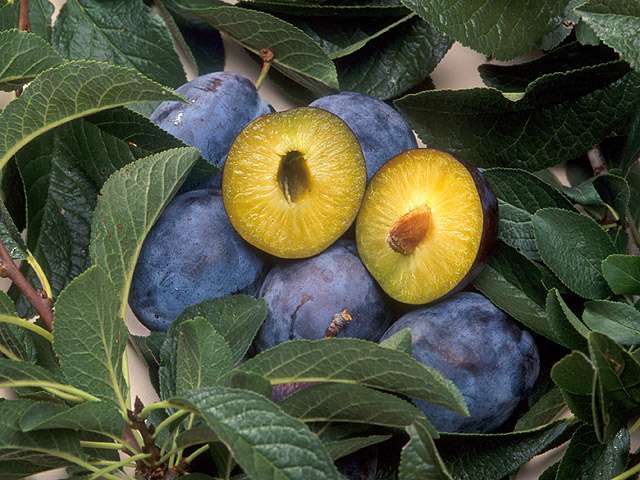Yeasts on plums have a plus side

Some naturally occurring yeasts may be useful for protecting stone fruits against pathogens that attack after harvest. Scientists at the U.S. Department of Agriculture (USDA) looked to the microflora on the surface of the plum to find potential biocontrol agents against brown rot.
At the Agricultural Research Service (ARS) Appalachian Fruit Research Station in Kearneysville, West Virginia, plant pathologist Wojciech Janisiewicz and his colleagues determined that the plum surface harbors several yeast species with excellent potential for use as biological controls against brown rot of stone fruits. Brown rot is caused by the fungus Monilinia fructicola.
Fruit surfaces are naturally colonized by a variety of microbes, including bacteria and yeast. Some of those native microorganisms have been shown to have a beneficial effect on reducing fruit decay after harvest.
In previous efforts, Janisiewicz developed a bacterium normally found on apples into a commercial biological control product that can be used instead of fungicides to control pome fruit diseases. The product is also allowed in organic marketing. A lot of information exists about the benefits of natural fruit microflora on grapes and apples, but for plums, the extent of their potential for biological control of fruit decay remains largely unknown.
The research team identified yeasts naturally colonizing plums from early fruit development until harvest and explored their potential for controlling postharvest brown rot, the most destructive disease of stone fruits.
Through multiple screenings, Janisiewicz and his colleagues found yeasts with a range of biocontrol activities against M. fructicola, including several isolates that provided complete control on plums from decay caused by this fungus.
Two of the best control candidate species were Aureobasidium pullulans and Rhodotorula phylloplana. Developing these yeasts into commercial products will provide growers with an alternative approach for combating brown rot after harvest, and this approach should be compatible with requirements for the rapidly growing organic market.
Provided by Agricultural Research Service



















